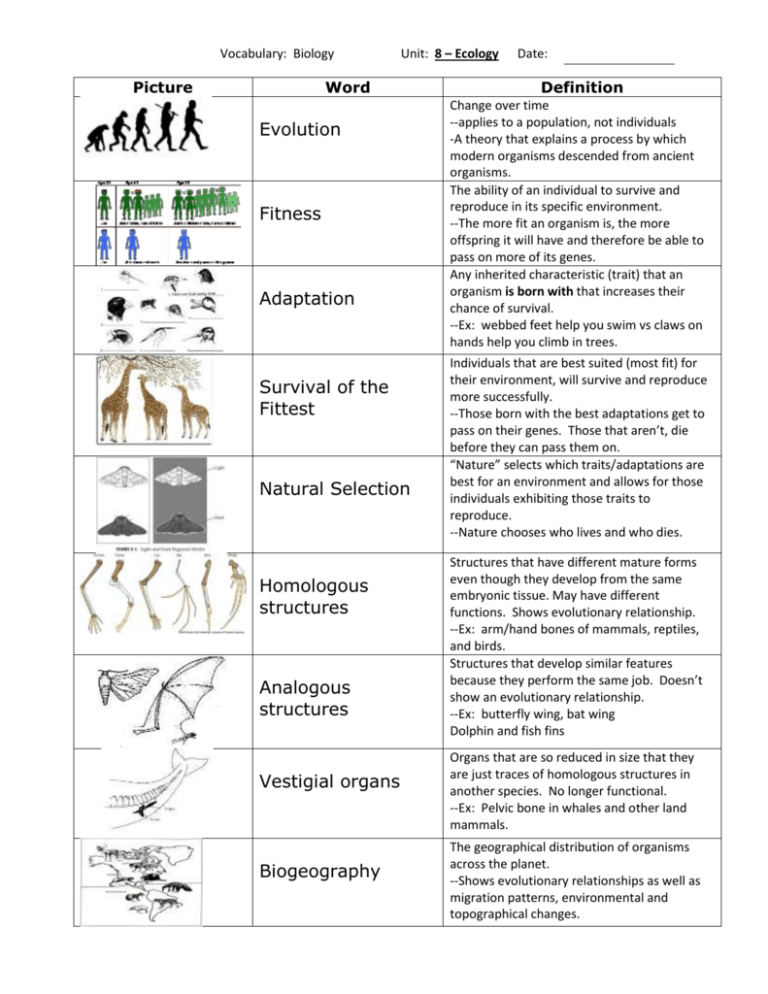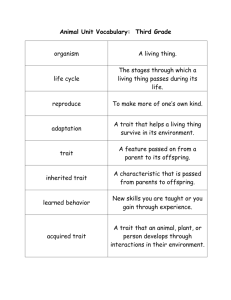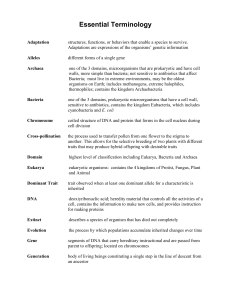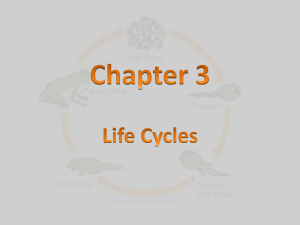Vocabulary: Biology Unit: 8 – Ecology Date: Picture Word Definition
advertisement

Vocabulary: Biology Picture Unit: 8 – Ecology Word Evolution Fitness Adaptation Survival of the Fittest Natural Selection Homologous structures Analogous structures Vestigial organs Biogeography Date: Definition Change over time --applies to a population, not individuals -A theory that explains a process by which modern organisms descended from ancient organisms. The ability of an individual to survive and reproduce in its specific environment. --The more fit an organism is, the more offspring it will have and therefore be able to pass on more of its genes. Any inherited characteristic (trait) that an organism is born with that increases their chance of survival. --Ex: webbed feet help you swim vs claws on hands help you climb in trees. Individuals that are best suited (most fit) for their environment, will survive and reproduce more successfully. --Those born with the best adaptations get to pass on their genes. Those that aren’t, die before they can pass them on. “Nature” selects which traits/adaptations are best for an environment and allows for those individuals exhibiting those traits to reproduce. --Nature chooses who lives and who dies. Structures that have different mature forms even though they develop from the same embryonic tissue. May have different functions. Shows evolutionary relationship. --Ex: arm/hand bones of mammals, reptiles, and birds. Structures that develop similar features because they perform the same job. Doesn’t show an evolutionary relationship. --Ex: butterfly wing, bat wing Dolphin and fish fins Organs that are so reduced in size that they are just traces of homologous structures in another species. No longer functional. --Ex: Pelvic bone in whales and other land mammals. The geographical distribution of organisms across the planet. --Shows evolutionary relationships as well as migration patterns, environmental and topographical changes. Picture Word Fossil Record Relative dating Genetic drift Gene pool Founder effect Directional selection Stabilizing selection Disruptive selection Reproductive Isolation Definition The use of fossils to provide evidence about the history of life on Earth. --It shows how different groups of organisms have changed over time. --It also shows evidence of climate change and other cataclysmic events. The age of a fossil is determined by comparing its placement with that of other fossils (like index fossils) in surrounding rock layers. --Index fossils: easily recognizable, existed for a short time and over a wide range. --oldest are deepest, younger are higher up. In a small population, individuals with a particular genotype (alleles) may leave, by chance, more offspring than others. Over time, this allele would become more common in the populations gene pool. Consists of all genes, including all of the different alleles, that are present in a population. When allele frequencies change as a result of the migration of a small subgroup of a population. --only the alleles present can be passed on. When individuals at one end of the curve (polygenic trait bell curve) have a higher fitness than individuals in the middle or at the other end. --Range of phenotypes shift in favor of one extreme. When individuals near the center (polygenic trait bell curve) have a higher fitness than individuals at each end. --Range of phenotypes shift in favor of the average. When individuals at both ends of the curve (polygenic trait bell curve) have a higher fitness than individuals in the middle. --Range of phenotypes shift in favor of both extremes. When individuals of two populations cannot interbreed and produce fertile offspring. --Can be behavioral, geographical, or temporal. Picture Word Adaptive radiation Convergent evolution Coevolution Endosymbiotic theory Extinction Species Cladogram Definition A single species or a small group of species evolves, through natural selection and other processes, into diverse forms that live in different ways. --Darwin’s finches --Occurs when new niches open up. --Leads to homologous structures The process by which unrelated organisms come to resemble each other due to the fact that they live in similar environments or they occupy the same niche. Ex: sharks and dolphins --Analogous structures When organisms that are closely connected to one another by ecological interactions will evolve together. --As one changes, so will the other --Ex: flowers and insects --Often a specialist A theory that proposes that eukaryotic cells arose from living communities formed by prokaryotic organisms. --ancient aerobic/photosynthetic bacteria became mitochondria/chloroplasts by entering another prokaryotic cell and remaining inside as an organelle. When the last of a species dies. --A result of not being able to compete for resources, environmental changes, cataclysmic events. --Nature selected against them A group of organisms that breed with one another and produce fertile offspring that look like the parents. --Speciation: process by which a new species is formed. A chart that is used to show evolutionary relationships (like a family tree). --Each split represents the appearance of a new trait (like claws, wings, bones, jaws, flowers, etc) -- The genetic line of an organism (without the trait) splits off prior to appearance of trait. --Each intersection represents a common ancestor to all after split.







